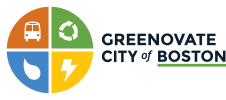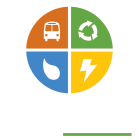Five neighborhoods will begin work on traffic-calming plans this year; an effort to reduce traffic speeds and improve the quality of life for Bostonians.
Last week Mayor Walsh and the Boston Transportation Department announced the selection of five neighborhoods that will join the Neighborhood Slow Streets program in 2017. The neighborhoods of Chinatown, Grove Hall/Quincy Corridor, Highland Park, Mount Hope/Canterbury, and West of Washington Coalition will work with Public Works and Transportation Departments to plan and implement traffic-calming projects.
Neighborhood Slow Streets projects aim to reduce the number and severity of crashes on residential streets by reducing the speed of drivers to 20 MPH. By using visual and physical cues to slow drivers down, streets become more inviting for people of all ages who are walking, playing, or cycling in their neighborhoods.
“The Neighborhood Slow Streets program brings us closer to achieving Vision Zero by proactively lowering speeds on streets where Bostonians live, play, and travel,” said Mayor Walsh. “This initiative is a great collaboration between city agencies and communities that delivers traffic calming results that will make our neighborhoods safer.”
This announcement builds on the Mayor’s commitment to Boston’s Vision Zero, and the work underway by the Transportation Department to create traffic-calming measures in neighborhoods around Boston.
Vision Zero is the City’s plan to eliminate fatal and serious traffic crashes in Boston by 2030. Key Vision Zero accomplishments include lowering the City’s default speed limit to 25 MPH; establishing dedicated, protected bike lanes; launching the Neighborhood Slow Streets program; and making pedestrian and cyclist safety a focus when planning major roadway construction.
Transportation emissions account for nearly 27% of our greenhouse gas emissions in Boston. Improving active transportation infrastructure such as sidewalks and bike lanes is a priority outlined in the Climate Action Plan, and is important to making Boston carbon free by 2050.
You can learn more about Neighborhood Slow Streets here. Greenovate works to connect Bostonians to the work the City and other organizations are doing to move us closer to a carbon free city. By signing up for our newsletter you’ll be kept up to date with all thing climate — including important updates to Vision Zero.


Recent Comments